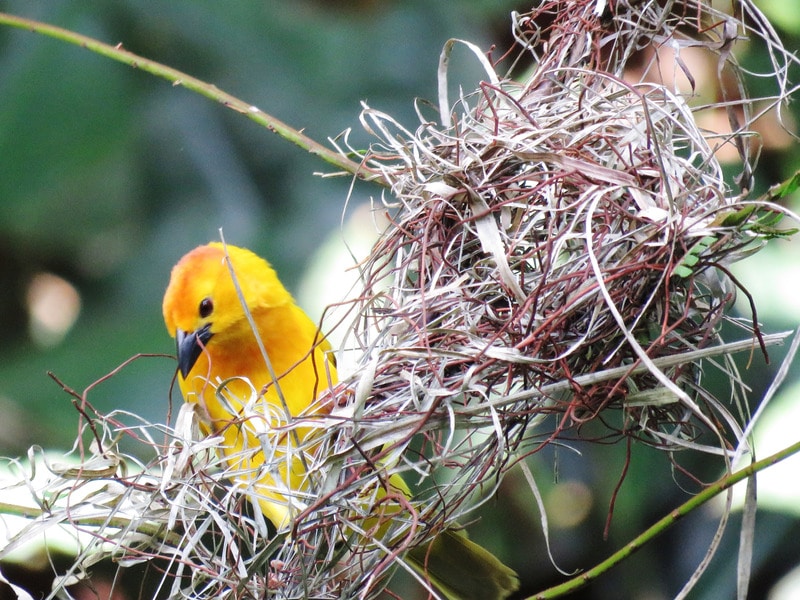Birds are a beautiful part of the wildlife in Indiana, and it is all our responsibility to make sure they are protected so future generations can also enjoy them. The Migratory Bird Act of 1918 prevents people in the United States from trapping or killing most species, but we can also harm them inadvertently by eliminating their nests.
Bird nesting patterns
Almost all of us have heard of birds “flying south for the winter.” This is a common practice for birds to protect themselves from harsh climates. Most other animals are forced to hunker down and do things like hibernate, but since birds have wings, they can just quickly relocate.
When the birds return, typically in the spring, but sometimes as early as late winter, they begin to make nests so they can hatch “broods” of young. The nests help them to protect and hide their eggs and chicks from predators and weather. This “nesting season” can go well into the fall with some birds, especially if they are a species that has multiple broods a year.
The nests are made from materials the birds find around them, like leaves, grass, spider webs and even human trash. Mostly these nests are built in trees, but some birds will put their nests on the ground or hidden among debris.
Avoiding disrupting or harming nesting birds
Summer already is not as good a time to trim tree branches, because it causes them to grow unevenly and leaves open wounds in their bark during a season with a lot of insect and microbial activity. Add protecting birds to the list.
Cutting down a branch with a bird’s nest on it can eliminate not only the brood that was nested there, but also all the generations of birds that would have come from them. If a branch has to be cut down during nesting season, make sure you have an expert look carefully for signs of bird activity. Even if there are no birds at the moment, you could be removing a branch that birds had used in the past and would have used in the future.
Another reason to be careful about cutting down limbs that are used for nesting is that many birds, especially raptors, can be dangerous to cross paths with. Raptors, despite what you may have assumed from watching Jurassic Park, are birds of prey. In Indiana, these include owls, hawks, eagles and falcons — all of which can be defensive when they feel their nests and chicks are threatened.
Ask Anthony’s when in doubt
If you are wondering about a bird’s nest and whether it’s a good time to trim your trees, ask Anthony’s Lawn Care and Landscaping. Our staff is trained to respect wildlife and to avoid harming nesting birds while balancing the safety of our clients and their homes. If you live in the greater Bloomington, Indiana, area, call us at (812) 345-5694, and we can evaluate the specific circumstance.



Recent Comments